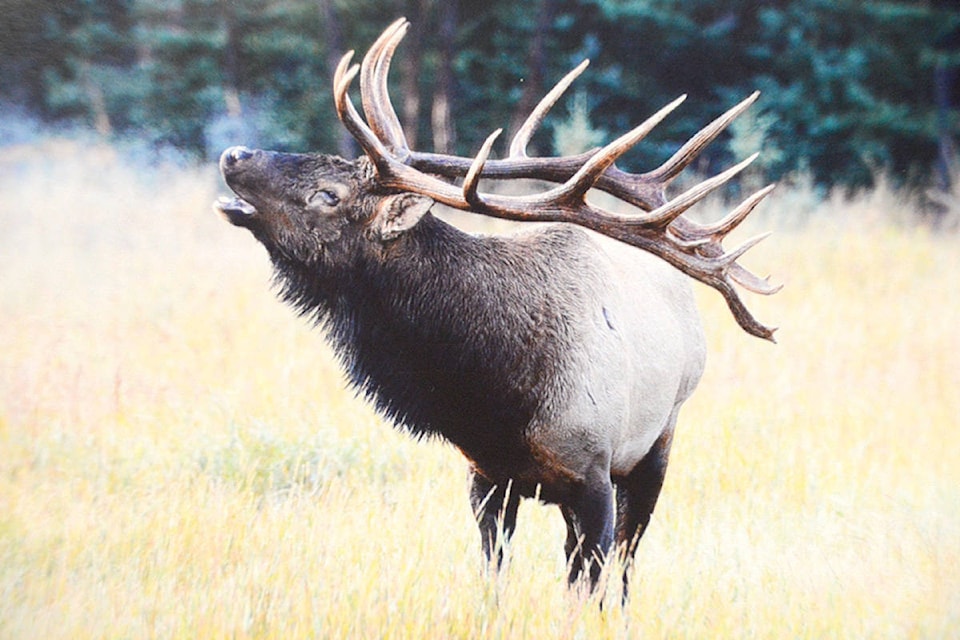The regional arm of the BC Wildlife Federation is sounding the alarm over declining elk population numbers following the release of a government survey showing a 50 per cent decline over 10 years.
Jeff Berdusco and Mark Hall with the East Kootenay Wildlife Association received the data from the government during a presentation to a wildlife stakeholder group, which was collected through aerial helicopter counts over the winter.
The results, which ballpark a count of 6,700-6,900 elk in the East Kootenay, are alarming, considering the last count identified roughly 14,115 elk in the region ten years ago.
“That’s just way too long to be drawing a straight line between two data points, especially when we’re talking about living, wild animals that are being subject to various effects on the landscape 12 months of the year 24/7,” said Mark Hall, with the East Kootenay Wildlife Association (EKWA).
“It doesn’t leave anybody a whole lot of opportunity to adjust whether its harvest levels, seasons, or make any adjustments to things happening on the land base.”
The survey also identified roughly 14 bulls and 38 calves per 100 cows.
Data collection on elk numbers has been intermittent, which makes it difficult to establish trends.
That’s really the biggest hurdle when it comes to identifying the causes for the drop in population, said Jeff Berdusco, another member of the EKWA.
“Nobody knows exactly what’s going on out there and so if we just run around making changes as social management dictates, then we’re screwed,” Berdusco said.
“We’re not going anywhere. We need somebody to sit down and figure out what’s driving these populations and then start funding the change, funding the solution because more regulation changes aren’t going to do anything.
“That’s all we’ve been doing for 30 years now.”
The EKWA is advocating for a three-pronged approach to wildlife management which requires sustainable funding, a science-based approach and social support from a wide swath of the public — not just hunters.
“This isn’t just about hunting, this is about our resource that belongs to everybody,” said Hall. “It’s part of why people come to live here in the East Kootenays, being surrounded by nature, and that nature belongs to everybody in this province and we are strong advocates for everybody standing up and becoming more politically active with the same message that wildlife needs to be a priority.”
Because there’s no way to pinpoint what’s driving the decline, there’s no way to identify viable solutions that can reverse the trend. The only changes the government has made is proposing the reduction or elimination of cow Limited Entry Hunt (LEH) tags and/or eliminating the spike bull season.
Part of the problem is that wildlife populations declines aren’t limited to elk, but also Bighorn sheep in the Bull River area and regional moose and mule deer numbers are also dipping.
Finger pointing to potential factors such as the length of the elk hunting season or increased rates of predation are a moot point, because no one really knows if those will reverse the trend, according to the EKWA. Other factors that haven’t received enough study include nutrition from the landscape and if the elk are malnourished in both summer and winter seasons.
“People tend to want to throw the silver bullet at predators and if we wiped out all the predators, we’d be just fine, and I’m not sure that’s true,” Berdusco said.
“…It’s not just as simple as wiping them all out, because if there’s a feed issue on the landscape, then you could have zero predators and you’re still not going to recover that population.
Funding support could be at least be partially addressed by redirecting hunting license fees back into wildlife conservation programs, similar with how fishing license fees are now 100 per cent fed back to the Freshwater Fisheries Society of BC, which takes the lead on freshwater fish conservation for BC lakes and rivers.
“We just want to keep the pressure on that,” Berdusco continued. “We still think that the money out there for hunting license sales should be going back on the resource, it shouldn’t be going into general revenue and that’s a good place to start.”
Addressing the problem means getting the attention of the provincial government and that means people have to step up and contact their MLAs, regardless of political affiliation, to make sure their voices are heard, said both Berdusco and Hall.
“The total attention of our government in the province is housing in the Lower Mainland, it’s LNG, it’s a pipeline,” said Hall, “and the rest of the province, including the East Kootenays, we’re sitting here watching things like wildlife disappear off the landscape and these impacts and it’s just not on the priority list.”
